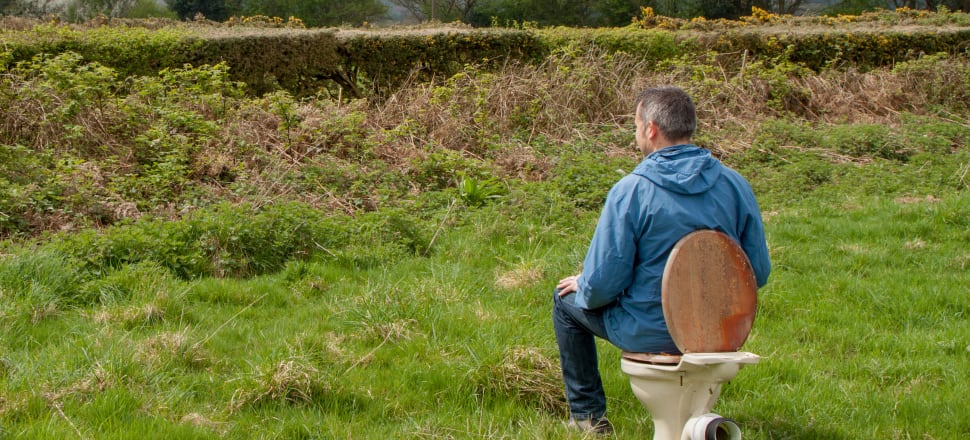
Australia puts 80 percent of its nutrient-rich ‘biosolids’ back onto farm land as fertiliser. In New Zealand it’s just 20 percent. Instead half of our sludge goes to landfill. That’s changing – and Three Waters could be a catalyst.
Rob Tinholt’s official title is resource recovery manager at Watercare, Auckland’s water company and the biggest water provider and sewage treater in the country. When water industry colleagues refer to him as New Zealand’s Biosolid Master, it’s meant as a compliment.
Tinholt has more than 25 years experience in waste management, most of it in wastewater. Fourteen of those years have been spent at Watercare, 10 leading the project to deal with sewage sludge from our biggest treatment plant, Māngere. If you want to know about what’s going on in an industry most of us are keen not to know much about, Tinholt’s your man.
He says we aren’t making the most of our biosolids – yet.
READ MORE: * The more you know about waste, the less you sleep at night * Our water problem in 15 worrying charts
In Australia, the UK, the US and many other countries, biosolids are seen as a valuable resource. Between 75 and 90 percent of the nitrogen and phosphorous-rich product is spread on farms to replace nutrients in the soil and reduce the use of imported fertiliser.
In New Zealand that number is just 17 percent. It’s not all wasted – some biosolids are used as a filler and rehabilitation material for old quarries. Most of the Māngere biosolids go to neighbouring Puketutu Island, known as Te Motu a Hiaroa.
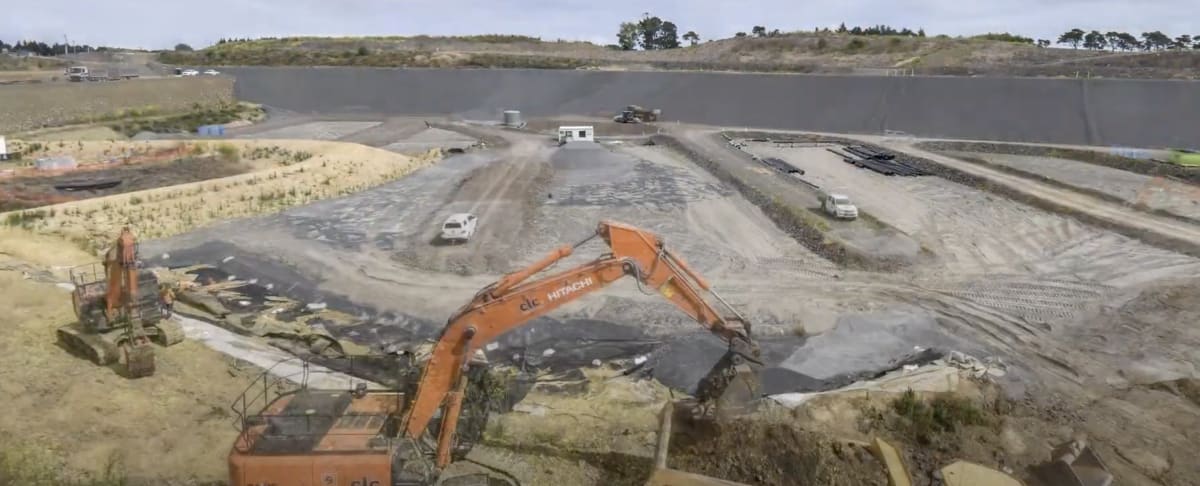
But a lot of the biosolids from our 360 wastewater treatment plants and hundreds of smaller facilities end up in landfill – maybe as much as half of what we produce.
There are a few reasons for that. Health and safety regulations around pathogen removal which are more strict here than in some other places, Māori cultural concerns around human waste being used on land, a long-standing ‘yuck factor’ about sewage and misunderstanding about its benefits for farmers, and the fact that biosolids do best on dry soils, and Australia has more of those than New Zealand.
But mostly it’s been about money. Historically, low prices to dispose of rubbish in New Zealand has meant the cheapest and easiest thing to do with sewage sludge has always been to take it to the landfill.
That’s changing fast, Tinholt says. Commercial and public landfills are charging more, and the Government’s levy on waste has increased sharply. Originally $10 a tonne, it went to $20 in July 2021, $30 in July 2022 and will jump to $50 a tonne this year and $60 next year – a sixfold increase in four years.
“Since the middle of last year, when we started selling the product in bulk, we are selling at a rate where we’ve had to constrain the market because our supply can’t keep up.” – Rob Tinholt, Watercare
Other things are different too. Views on waste and landfilling, moves away from commercial chemical fertilisers, knowledge about the benefits of organic matter for crops, and concerns about climate change. Organic materials, including sewage sludge, produces greenhouse gases as it rots. And while some landfills collect that, many don’t, releasing methane and CO2 into the atmosphere.
“All sorts of businesses are starting to make decisions around sustainability, including farmers looking at local forms of fertiliser, and a move to reduce organic matter going to landfill,” Tinholt says
Then there are technological advances around everything from drying biosolids (which makes them less bulky and easier to transport), to turning them into other products.
For the last 18 months Tinholt and his team have been working on a fertiliser made from phosphorus and nitrogen that crystallises during the wastewater treatment process.The product, Emerge Struvite, was launched last year and is being marketed for gardens and lawns, as well as for farms and sports fields.
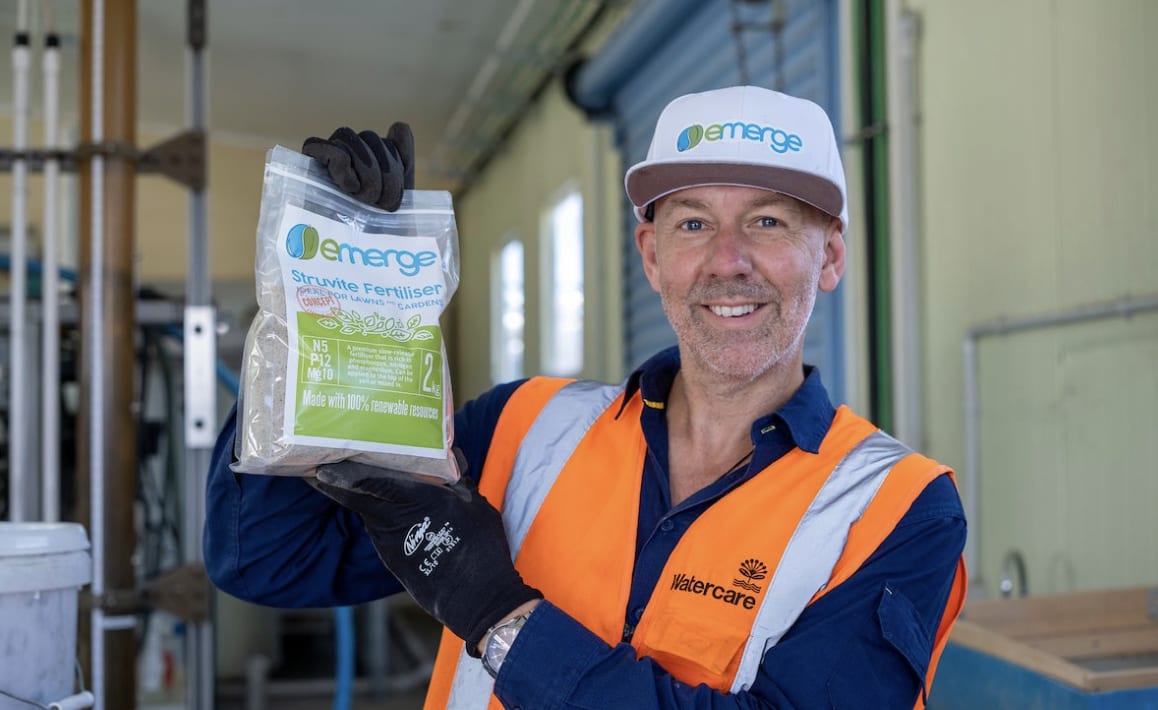
Although it’s using less than 0.1 percent of the biosolids being produced at Māngere, it’s commercially viable, Tinholt says.
“We are selling it for a good solid price, centred around the same costs of nitrogen and phosphorus the big two [fertiliser manufacturers] are charging.
“Since the middle of last year, when we started selling the product in bulk, we are selling at a rate where we’ve had to constrain the market because our supply can’t keep up.”
Tinholt says Watercare is at the early stages of planning for an organic product which will eventually start taking over from Puketutu Island as the destination for biosolids, as that project comes to an end over the next decade or so.
Development of Watercare’s new compost-style product will be made possible by technologies that weren’t available in the past, Tinholt says, including thermal hydrolysis, an anaerobic digestion technique involving high temperature and pressure. This allows the company to pasteurise the biosolids to make them biologically safe, and then remove nasty smells.
“There’s the yuck factor, plus a degree of nimbyism.” – Garry Macdonald, Beca.
It’s exciting, but also very expensive technology – hundreds of millions of dollars of investment for a company the size of Watercare, he says,
There’s no shortage of technology around the world, says Garry Macdonald, market segment director at engineering consultancy Beca.
In October 2022 he and a group of colleagues and clients went to the US to study what companies were doing with biosolids. The trip reinforced how different the market is in New Zealand - particularly in terms of the stigma associated with biosolid-based fertilisers in the minds of farmers and other consumers.
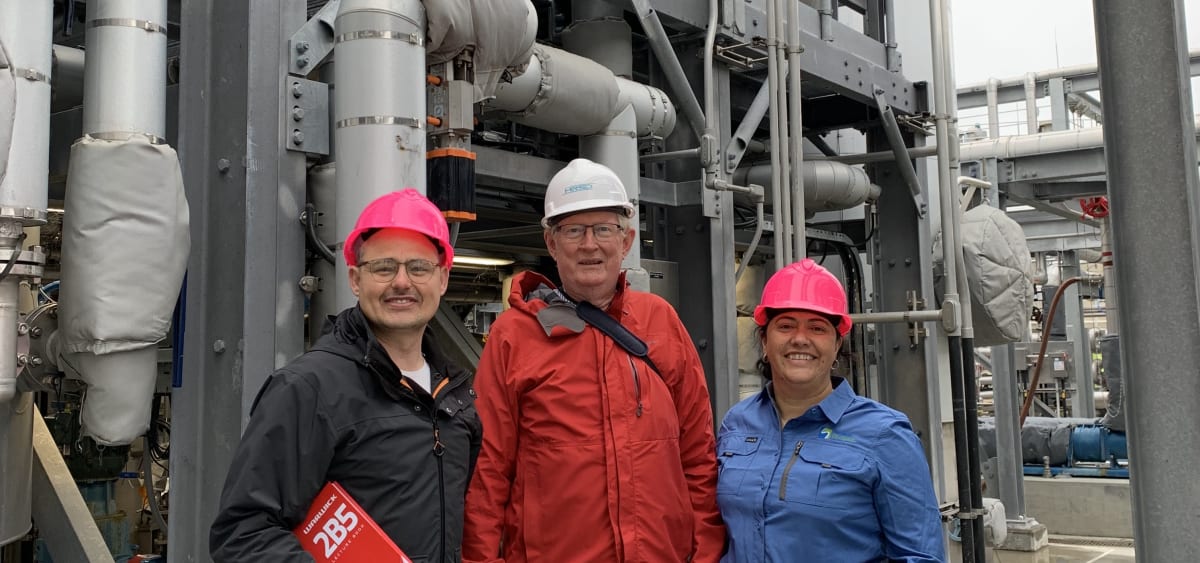
“There’s the yuck factor, plus a degree of nimbyism,” Macdonald says.
For that reason he says New Zealand companies needs to start from the marketing side, rather than product development.
“Once you’ve established a sustainable end use there are several ways we as process engineers can produce that end product – there are any number of examples of different processes. But you need to find out what the market needs.”
As the cost of sending sewage sludge to landfill increases and the heat goes on landfill operators in terms of methane and CO2 emissions, it’s going to make more and more financial sense for wastewater treatment plants to look at more sustainable ways to deal with their biosolids, including commercial products.
Some are already doing it.
In Taupo, for example, the world’s largest worm farm mixes biosolids with organic waste from pulp and paper plants, market gardens, dairy factories and abattoirs to produce a natural fertiliser. In New Plymouth, a 'bioboost' product is used to fertilise golf courses, among other things.
Meanwhile biosolids from the Christchurch wastewater treatment plant are used as a soil substitute, and the Eastern Selwyn sewerage scheme has New Zealand’s first municipal solar-powered sludge drying facilities in what look like vast greenhouses on the treatment plant site.
Engineering firm Downer has been involved in an Australian-based technology development project to not only dry biosolids, but remove harmful PFAS chemicals and microplastics.
Salma Rayan, a senior Three Waters engineer at Downer NZ, says the company has had some initial interest from some New Zealand councils in biosolids technology “but it’s a big cost”.
“It’s vital you have boards of directors and management teams able to concentrate on water infrastructure services all the time, not parks, or dog control or noise." – Gillian Blythe, Water NZ
Which is where the Three Waters reform could come in, says Caroline Crosby principal advisor at NZ-based water and wastewater engineering consultancy company Lutra.
Crosby says merging management of the 67 council-owned water bodies into four large organisations would bring opportunities for investment in centralised water facilities serving a number of neighbouring communities.
Gillian Blythe, chief executive of Water New Zealand, a not-for-profit member organisation promoting the sustainable management and development of water, agrees the 3 Waters reform provides opportunities for greater innovation in the sector.
Cost and scale are important factors which have kept New Zealand’s landfill disposal rate for biosolids high, and innovation rate low, Blythe says.
Because the ownership and governance structure of the new organisations have been hugely controversial, discussion of the advantages of the reform have been lost, she says.
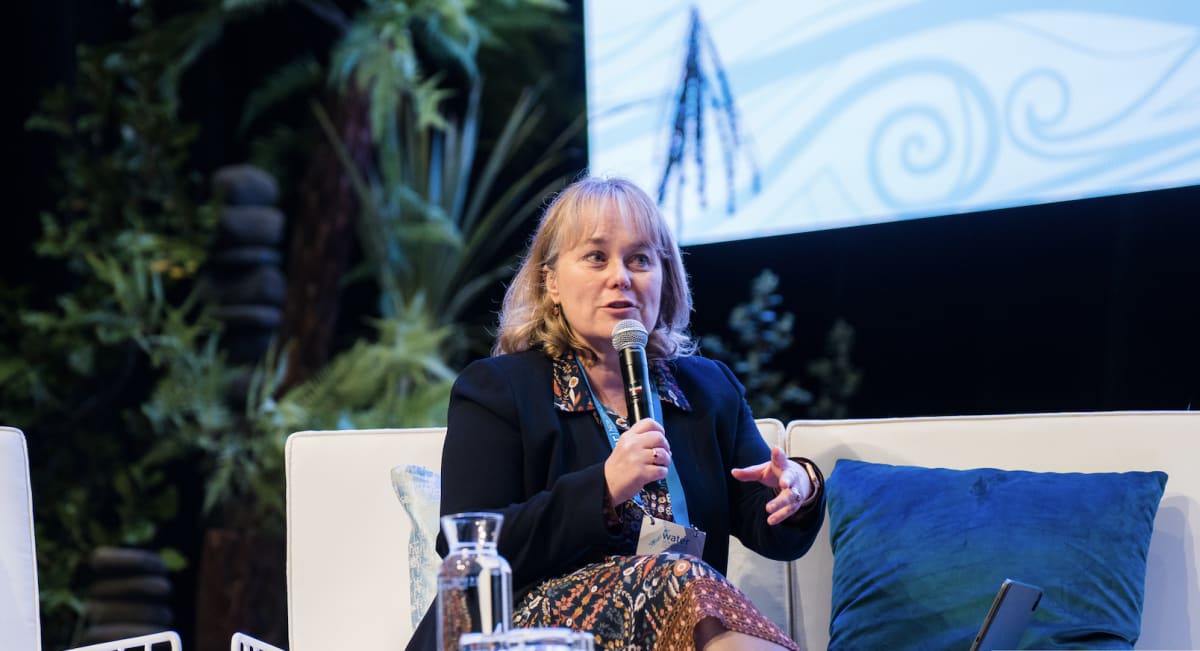
Before moving into the water sector, Blythe spent two decades with Meridian Energy, and she says the scale of companies in the electricity sector has enabled levels of investment impossible in most water bodies.
“An important component of the water reform needs to be creating the right environment to enable innovation. This could include special cross-sector working groups with officials to ensure a regime which doesn’t create barriers to innovation, and potentially a levy to help fund sustainability initiatives, like the one run through EECA, the energy efficiency and conservation authority.
“It’s vital you have boards of directors and management teams able to concentrate on water infrastructure services all the time, not parks, or dog control or noise."







